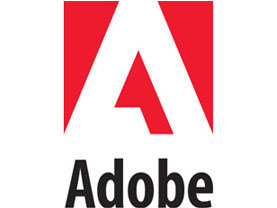The good news for users running Linux operating systems on their 64-bit processor machines is that Adobe has finally released an x64 version of the popular Flash Player, meaning that the days of using x32 software versions are soon to be over. The bad news is that this is still an Alpha build; for those of you that are not familiar with this technical jargon, an Alpha build is one of the earliest builds possible, much earlier than Beta.
“This is a prerelease version of the Adobe® Flash® Player 10 software for Solaris and 64-bit Linux platforms. It is being made available for developers and consumers to test their content to ensure new features function as expected, existing content plays back correctly, and there are no compatibility issues,” says Adobe Labs.
One thing that you should notice is the fact that the installers of Adobe x64 Flash Player for the time being offer language support for just one language. Yes, that language is English, not to mention that feedback to Adobe is accepted only in English (hopefully this will change in the future).
Follow these simple steps to install Adobe Flash Player on your Linux machine. Please note that if you have other versions of Adobe Flash Player installed on your system, you should uninstall them first.
1. Download the software onto your machine. A download link is available here.
2. Once the download is complete, close the browser and proceed to unzip the archive you’ve just downloaded.
3. Go to your Home folder and select the option to view hidden files. You can accomplish this by simultaneously pressing Ctrl + H, or by clicking on the View tab and then on Show Hidden Files.
4. After you locate the .mozilla plugin, proceed to opening it. Now create the following folder: “plugins”.
5. Remember step 2? When you unzipped the archive surely you noticed a libflashplayer.so file. It is now time to take that file and put it in the mozilla/plugins folder. The simplest way to do this is by means of drag and drop.
6. Open your browser.
“This is a prerelease version of the Adobe® Flash® Player 10 software for Solaris and 64-bit Linux platforms. It is being made available for developers and consumers to test their content to ensure new features function as expected, existing content plays back correctly, and there are no compatibility issues,” says Adobe Labs.
One thing that you should notice is the fact that the installers of Adobe x64 Flash Player for the time being offer language support for just one language. Yes, that language is English, not to mention that feedback to Adobe is accepted only in English (hopefully this will change in the future).
Follow these simple steps to install Adobe Flash Player on your Linux machine. Please note that if you have other versions of Adobe Flash Player installed on your system, you should uninstall them first.
1. Download the software onto your machine. A download link is available here.
2. Once the download is complete, close the browser and proceed to unzip the archive you’ve just downloaded.
3. Go to your Home folder and select the option to view hidden files. You can accomplish this by simultaneously pressing Ctrl + H, or by clicking on the View tab and then on Show Hidden Files.
4. After you locate the .mozilla plugin, proceed to opening it. Now create the following folder: “plugins”.
5. Remember step 2? When you unzipped the archive surely you noticed a libflashplayer.so file. It is now time to take that file and put it in the mozilla/plugins folder. The simplest way to do this is by means of drag and drop.
6. Open your browser.

























